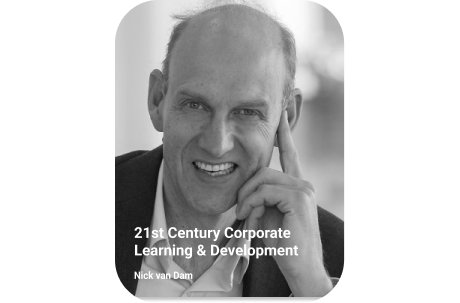
How to integrate learning and development into company culture
In today’s competitive market, it’s essential for companies to invest in the right learning and development strategies to ensure employees have the skills they need to stay ahead of the curve. However, if L&D efforts are not integrated into a company’s culture, they can quickly become stagnant and ineffective.
Below, we’ve outlined 10 strategies organizations can use to integrate learning and development into their company’s culture. By leveraging these strategies, L&D professionals can create an engaged and productive workforce driven by a collective mindset of continuous learning.
If you want ideas for how to apply these strategies in your company, make sure to listen to our free podcast by Josh Bersin on How to Revive Your Organization’s Learning Culture.
Make learning a strategic priority
To create a culture of learning and development, it’s important to make learning a priority at all levels of the organization. This may involve allocating budget and resources to learning and development initiatives and making sure that learning opportunities are integrated into the daily workflows of employees.
Create an environment that encourages learning
To successfully integrate learning and development into a company’s culture it’s also important to create an environment that encourages and facilitates learning. Studies have shown that employees who feel supported by their managers and colleagues are more likely to engage in training and development activities.
Companies should ensure that employees have easy access to learning opportunities, they should let employees take ownership of their own learning and development and encourage them to spend time during work hours learning and developing new skills.
Foster a growth mindset
A growth mindset is a way of thinking that encourages people to embrace challenges and see them as opportunities for learning and growth. Help your employees to develop a growth mindset by promoting company values of curiosity, experimentation, and resilience.
Leverage experiential learning
Experiential learning is a powerful tool for integrating learning and development into a company’s culture. This type of learning allows employees to gain hands-on experience and develop a deeper understanding of the skills they need to succeed.
One of the best ways to leverage experiential learning is to create short-term projects and assignments that require employees to apply what they have learned. By providing employees with the opportunity to put their knowledge into practice, they will be more likely to retain information and use it effectively in their day-to-day work.
Leverage learning technology
Technology is an invaluable tool for integrating learning and development into a company’s culture. By leveraging technology, L&D professionals can create more engaging and accessible learning experiences for their employees.
For example, companies can leverage virtual reality (VR) technology to provide immersive learning experiences. Studies have shown that VR can help employees gain a better understanding of challenging topics and develop skills more quickly. Additionally, companies can use cloud-based learning management systems (LMSs) to deliver training materials and monitor employee progress.
Make learning social
Learning through interaction with others is a powerful way to facilitate knowledge-sharing and collaboration within an organization. Encourage employees to share their knowledge and experiences with one another and consider implementing social learning platforms or other collaborative learning tools.
Recognize and reward learning
Providing incentives for employees to engage in training and development activities can be a great way to encourage learning. Companies can offer a variety of incentives, such as gift cards, extra vacation days, or even promotions.
Additionally, companies should recognize employee achievement and success. Acknowledging employees for their progress can help create a sense of pride and accomplishment, which can lead to increased learning engagement and motivation.
Embrace change
To integrate learning and development into the company’s culture, companies should embrace change and continuous improvement. Companies should be open to new ideas and approaches and be willing to experiment with different strategies and tactics. Furthermore, employees should be encouraged to strive for continuous improvement and development.
Leverage data and analytics
By leveraging data and analytics, companies can identify areas where improvement is needed and develop targeted plans to address these issues. Data and analytics can help companies measure the effectiveness of their learning and development programs and track how engaged employees are in learning. Data can also be used to optimize learning content, so it matches the development needs of employees.
Make learning engaging
Finally, and perhaps most importantly, companies should strive to make learning engaging for their employees. Companies should be willing to invest in new technologies and tools, such as audio learning, virtual classrooms, and gamification, that offer a more engaging learning experience for employees.
Integrating learning and development into a company’s culture is important for creating a more agile, engaged, and productive workforce. However, many companies struggle to manifest learning at a deep level.
Top 3 reasons why companies fail to embed learning into their organizational culture
Below are the three most common reasons that companies fail in their efforts to create a culture of organizational learning. For more insight, check out our free eBook by Nick van Dam where he offers his advice for companies about how to create a company mindset of continuous learning.
Do not invest enough time or resources
The most common challenge companies face when trying to create a culture of learning is that they are unable to dedicate the time and resources it actually takes to provoke cultural change. According to a survey by the American Society for Training and Development, 46% of companies reported that they struggle to allocate sufficient budget and resources to learning and development. Embedding learning into the company’s culture requires flagging it as a strategic priority with top-level buy-in.
Not enough focus on engaging employees
At the same time, a company can invest millions in a learning and development infrastructure, but unless it engages employees in learning it is worthless. According to a survey by LinkedIn Learning, only 27% of employees feel that their company’s training programs are effective. This low level of engagement can be due to a variety of factors, including a lack of relevance or perceived value of the training, lack of simplicity or usability of the learning solutions offered, lack of access to learning content, lack of time available to employees to dedicate to learning, and a lack of support or encouragement from management.
It’s difficult to measure
The difficulty of measuring the business impact of learning and development initiatives is another challenge that causes many companies to prematurely abort their efforts to develop an organizational learning culture. According to a survey by the Association for Talent Development, only 33% of companies feel that they are effectively measuring the return on investment of their learning and development programs. This makes it difficult for companies to demonstrate the value of learning to senior leadership and secure sufficient funding over time.
Creating a company culture where employees are actively engaged in continuous learning and development is a time consuming and complex endeavor. However, the potential payoff is enormous. According to a study by the Institute for Corporate Productivity, companies with a strong learning culture are 21% more profitable than those without. Furthermore, a survey by Deloitte found that companies with a culture of continuous learning have a median total shareholder return that is nearly twice as high as that of companies without. Finally, the Association for Talent Development found that companies with a strong learning culture are more agile and innovative, with 69% of respondents stating that their organization’s learning initiatives have resulted in increased innovation.

Download free L&D content

Modern L&D Strategy by Nick van Dam
Download a free copy of our best-selling eBook with the newest trends in Learning & Development strategy by the former Global Chief Learning Officer at McKinsey & Co.

Free Learning & Development content
More Digital Learning content

Adaptive Learning Systems: Personalized Training at Scale
In the fast-paced realm of corporate Learning & Development, it’s imperative to keep abreast of emerging strategies that can reshape the way we train employees. Among the most significant innovations in the field is the concept of “Adaptive Learning Systems.” These systems are not just changing the game; they’re altering the rules, allowing Learning & Development professionals to deliver highly personalized training for employees while setting new standards for adaptive e-learning in organizations.

Sustainable Learning and Development in L&D
In recent years, the corporate world has witnessed a significant shift towards sustainability and eco-conscious practices. As Learning & Development (L&D) professionals, it’s our responsibility to ensure our training programs align with these eco-friendly developments. In this article, we will delve deeper into the concept of sustainable learning and development, explore its significance, and discuss various ways to incorporate eco-friendly training into your L&D programs.

Mindful Learning in Corporate L&D: Fostering Well-being
In today’s fast-paced corporate world, Learning and Development (L&D) professionals face a unique challenge. They must equip employees with new skills and knowledge while ensuring their well-being in a demanding work environment. Mindful Learning offers an innovative solution to this challenge. In this article, we’ll explore the concept of Mindful Learning and how it fosters well-being in the corporate L&D space. We’ll also delve into Mindful Training Techniques that can be applied to create a more productive, balanced, and engaged workforce.

Unlocking Well-Being: An Introduction to Holistic Time Management
In the fast-paced world of corporate learning & development, time is both a precious resource and a common challenge. Learning & Development (L&D) professionals often find themselves balancing myriad tasks, from designing training programs to fostering employee growth. However, amid this hustle, the concept of holistic time management emerges as a beacon of well-being and productivity. This blog post embarks on a journey to explore holistic time management, uncovering strategies that promote well-being in the workplace. Our goal is to provide L&D professionals with actionable insights and techniques to lead healthier, more fulfilling professional lives.
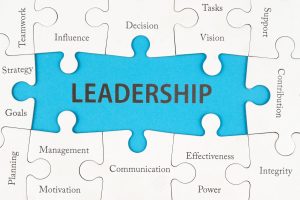
Hybrid Leadership Manual: Leading and Managing Teams in the New Normal
In the realm of corporate learning and development, the winds of change are blowing stronger than ever. Learning & Development (L&D) professionals are at the forefront of these transformative times. The hybrid workplace, born out of the challenges posed by the “new normal,” demands a fresh perspective on leadership and team management. In this comprehensive blog post, we embark on a journey to explore the multifaceted concept of hybrid leadership. Our goal is to provide L&D professionals with not just a theoretical understanding but actionable insights and techniques that empower them to thrive in this evolving work landscape.

Sustainable Corporate Learning: Green Training Practices
In today’s ever-evolving world of Learning and Development (L&D), the call for sustainability has never been more urgent. As Learning & Development Professionals, we have a unique opportunity and responsibility to not only foster professional growth but also to do so in an environmentally conscious way. In this comprehensive article, we’ll explore Sustainable Training Practices, delve into the realm of Eco-Friendly Corporate Learning, and uncover the value of Environmentally Friendly Learning Programs. Let’s embark on a journey towards a greener, more sustainable future for corporate training.

Gamification in Learning and Development: Innovative Training Games
In the fast-evolving realm of Learning and Development (L&D), staying at the forefront is critical. As learning professionals, we constantly seek innovative ways to captivate, motivate, and empower our learners. A dynamic trend that has taken L&D by storm is gamification. In this comprehensive article, we’ll take a deep dive into the world of Gamification in Learning and Development, exploring the fascinating realm of Innovative Training Games and the transformative potential of Gamified Training Solutions.

Neuroscience in Learning: Maximizing Training Impact
In the fast-paced world of corporate Learning & Development, staying at the cutting edge is essential. One powerful tool that is transforming the way we approach training is the application of neuroscience. Learning & Development professionals are beginning to harness the insights from brain science to create brain-friendly training methods that significantly boost learning outcomes. In this comprehensive article, we’ll explore the exciting intersection of neuroscience and corporate training, uncovering how understanding the brain can revolutionize your approach to employee development.

Mastering Virtual Collaboration: A Guide to Running Effective Online Meetings
The year 2020 brought about a profound transformation in the way we work and communicate. The global pandemic forced organizations and individuals to adapt rapidly to a new reality, one where remote work and virtual collaboration became the norm. This paradigm shift necessitated a reevaluation of how we conduct meetings and engage in teamwork. For Learning and Development professionals mastering virtual collaboration emerged as a critical skill for fostering productivity and maintaining business continuity.

Mental Health Training: Fostering Employee Well-being
In today’s rapidly evolving corporate landscape, the significance of employee well-being, particularly mental health, has taken center stage. Learning & Development professionals are increasingly recognizing the critical role they play in fostering a mentally healthy workplace through training. In this comprehensive article, we will delve deeper into the importance of mental health training for employees, explore how Learning & Development can contribute to well-being in the workplace, and discuss the role of well-being training in creating a healthier, more productive workforce.

Mastering Workplace Wellness: A Manager’s Guide to a Healthier, Happier Work Environment
In the fast-paced world of corporate learning and development, one aspect that is gaining increasing recognition is the vital role of workplace wellness. Learning and development professionals are realizing that a healthier and happier work environment directly contributes to employee productivity, engagement, and overall success. In this article, we will delve into the essential components of mastering workplace wellness, offering valuable insights and strategies that Learning & Development professionals can implement to promote employee well-being. Let’s explore workplace wellness strategies, employee well-being programs, creating a healthier work environment, initiating employee wellness initiatives, and managing workplace stress effectively.

Effective Strategies for Remote Workforce Training
In today’s rapidly evolving corporate landscape, remote work has become a norm, and with it, the need for effective remote workforce training has surged. Learning & Development professionals are at the forefront of this transformation, seeking innovative ways to ensure that distributed teams receive the training they need to excel in their roles. In this comprehensive article, we will delve deeper into the best practices and virtual employee training techniques that can help you create engaging online training programs for your remote workforce.

AI and Personalization in Corporate Learning
In the rapidly evolving field of corporate learning and development, there are two dynamic forces shaping the future: Artificial Intelligence (AI) and Personalization. For Learning & Development professionals, these aren’t just buzzwords; they represent a transformative shift. In this comprehensive article, we will dive deep into the realm of AI in Corporate Learning, explore the potential of Personalized Learning Solutions, and examine how AI is revolutionizing employee training. Prepare to gain a profound understanding of these cutting-edge trends and discover actionable strategies that will set your training programs on a path to excellence.
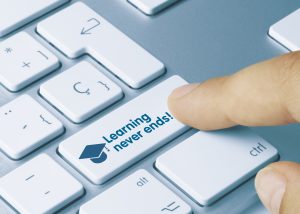
Unlocking Business Success: The Power of Continuous Learning
In the ever-evolving landscape of business, the adage “adapt or perish” couldn’t be more apt. The key to thriving in this dynamic environment is not just innovation or strategy; it’s continuous learning. Whether you’re an entrepreneur, a seasoned business professional, or a Learning & Development expert, embracing the concept of lifelong learning is the most potent tool in your arsenal. In this article, we explore how continuous learning fuels business growth, delving into effective Learning and Development strategies that foster professional development and support lifelong learning in the corporate world.

Mastering the Learning Organizations: Strategies for Managers
In today’s dynamic business landscape, the concept of a learning organization (LO) has evolved from a mere ideal to a strategic necessity. Companies are increasingly recognizing the paramount need to continually learn, adapt, and innovate in order to stay competitive. In this article, we embark on an exploration of highly effective strategies that managers can employ to transform their organizations into genuine learning organizations. This journey will delve into the realms of earning Organization Strategies, Managerial Learning and Development, Building a Learning Culture, and Managerial Training Best Practices.

Leveraging Neuroscience and Cognitive Techniques for Effective Training
In today’s rapidly evolving corporate landscape, Learning & Development (L&D) professionals face an ongoing challenge: how to enhance training programs and elevate learning outcomes in a way that keeps pace with change. Fortunately, there is a cutting-edge approach gaining prominence in the field: the integration of cognitive learning techniques with the principles of neuroscience. This comprehensive article will take an in-depth look into the captivating world of neuroscience in learning and explore how it can be leveraged to create more effective training methods. We’ll provide actionable insights, strategies, and unique perspectives to equip you for success in the dynamic world of L&D.

Mobile Learning: Strategies and Benefits for a Mobile-First Workforce
In today’s dynamic corporate landscape, where remote work and flexibility are the new norm, Learning & Development professionals face the exciting challenge of adapting training methods to meet the needs of a mobile-first workforce. Mobile learning, or mLearning, has emerged as a transformative approach to corporate training, offering numerous advantages for both organizations and employees.

Building a Learning Culture in Large Companies: A Blueprint for Success
In the dynamic realm of corporate Learning & Development (L&D), the establishment of a robust learning culture is essential for achieving sustained growth and adaptability. In this comprehensive article, we will delve into the profound significance of creating a learning culture in large organizations, with a specific focus on strategies that Learning & Development professionals can employ. We’ll explore the multifaceted aspects of this endeavor, offering practical insights and actionable techniques to cultivate a learning-centric corporate culture that not only fosters professional development but also nurtures employee growth and engagement.

The Impact of Remote Work on Corporate Learning Strategies
In the ever-evolving field of corporate Learning & Development (L&D), the surge in remote work has brought about profound changes, shaping corporate learning strategies. As L&D professionals navigate this transformative era, it’s essential to recognize how remote work influences corporate learning and explore innovative solutions, including virtual learning for remote teams and effective remote employee training solutions.
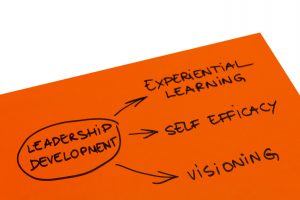
Unlocking Potential: A Deep Dive into Experiential Learning Techniques
A Paradigm Shift in Learning In the ever-evolving landscape of Learning & Development, the traditional approach to education is undergoing a profound transformation. Today, we embark on a journey of discovery into the realm of experiential learning techniques, a dynamic and hands-on approach to learning that is changing the game for professionals. In this exploration, we will dive deep into the world of hands-on learning methods, practical learning strategies, professional development approaches, and the best practices that are reshaping the future of learning.
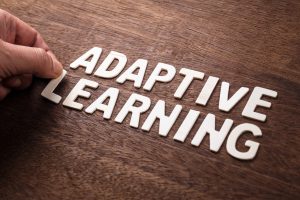
Tech-Driven Learning: Adapting to Changing Needs – Insights from a Learning Expert
Navigating the Future of Learning In the dynamic realm of Learning & Development (L&D), technology has risen as a transformative force, reshaping how professionals approach education and development. To embark on this journey of exploration into the world of Tech-Driven Learning, we are guided by a seasoned expert, the Chairman of the Learning and Performance Institute and Editor of Inside Learning Technologies Magazine. Together, we will navigate the seas of learning technology trends, delve into adaptive learning solutions, unlock the world of professional development online, and gain digital learning insights.

Optimizing L&D for Hybrid Workforces: Best Practices and Success Stories
In the contemporary corporate world, the emergence of hybrid workforces has heralded a significant paradigm shift in how organizations operate. For Learning and Development (L&D), this shift brings about unique challenges and opportunities. This article is your guide to navigating the complexities of hybrid workforces, offering comprehensive insights, practical tips, and inspiring success stories.

AI and Data Analytics for Personalized Learning in Corporate Training
In today’s rapidly evolving corporate landscape, Learning & Development (L&D) professionals are faced with the multifaceted challenge of delivering training that meets the diverse needs of employees across various roles and skill levels. Traditional one-size-fits-all learning models are increasingly inadequate in catering to the unique learning requirements of modern workforces. The convergence of artificial intelligence (AI) and data analytics has ushered in a new era, offering unprecedented opportunities to transform conventional learning approaches into dynamic and personalized learning journeys.

Practical strategies to maximize employee learning using technology
In the rapidly evolving landscape of Learning & Development, the symbiotic relationship between technology and employee learning has emerged as a transformative catalyst. This article stands as a guiding beacon for Learning & Development Professionals leading the way to harnessing technology’s full potential to revolutionize employee development. Embarking on this transformative journey, we will explore practical strategies that harness the prowess of technology to maximize learning potential, redefine learning techniques, unveil the myriad benefits of e-learning, and underscore the pivotal role of Learning & Development Professionals in this digital revolution.

Mastering Training Excellence: In-Depth Insights from Industry Experts
In the ever-evolving landscape of Learning & Development, the pursuit of training excellence has transitioned from a mere aspiration to an essential journey. This article acts as a guiding compass, directing Learning & Development Professionals towards the zenith of mastering training skills. Within this voyage, we navigate through a comprehensive collection of in-depth insights, each meticulously crafted by industry experts, as we venture to unlock the intricate secrets that underlie training success.

Enhancing Organizational Interactions and Employee Learning through Digital Training
In an era marked by rapid technological advancements, the significance of harnessing digital training to enhance organizational interactions and elevate employee learning cannot be underestimated. This meticulously crafted guide is tailored to meet the needs of astute Learning & Development Professionals. Together, let’s embark on a profound journey that not only explores the facets of digital training but also delves deep into its strategic intricacies, unearthing insights and tactical approaches that will reshape the landscape of learning.

Learning Models and Styles: A Comprehensive Guide
Embarking on a journey into the heart of effective learning is a transformative experience. In this article, we delve into the intricacies of “Learning Models and Styles for Adults,” unveiling the secrets of effective learning and self-development. This guide is dedicated to Learning & Development Professionals who seek to master the art of adult learning and empower their learners.

Maximizing Team Flow: Performance and Collaboration in Corporate Learning & Development
In the fast-paced and ever-evolving landscape of corporate Learning & Development (L&D), the quest to unlock team flow has become an essential goal for organizations seeking to maximize performance and collaboration.
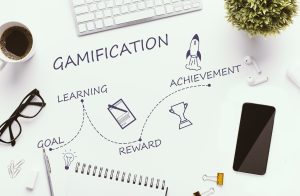
Unlocking Engaging Learning Experiences: Gamification for Effective Knowledge Acquisition
Welcome to a new era of engaging learning experiences that captivate learners and foster effective knowledge acquisition! In this blog article, we will delve deep into the transformative potential of gamification in Learning & Development (L&D). As a Learning & Development professional you have the opportunity to harness the benefits of gamified learning experiences and ride the waves of gamification trends to revolutionize your training programs.

Designing User-Focused, Data-Driven Learning for Today’s Digital Learners
In today’s rapidly evolving digital landscape, Learning & Development (L&D) professionals are faced with the challenge of designing effective learning experiences that resonate with modern digital learners. This blog article delves into an innovative approach to learning design that revolves around user-focused strategies and data-driven methods. By adopting this forward-thinking methodology, L&D professionals can create impactful learning experiences that drive behavioural change, foster engagement, and optimize performance management, thereby ensuring the success of their organizations.

The Evolving Landscape of Hiring: Transforming Learning & Development Strategies for the Modern Workforce
In the fast-paced and ever-changing corporate world, Learning & Development (L&D) professionals play a pivotal role in shaping the success of organizations. As the landscape of hiring evolves, it is crucial for L&D strategies to adapt to the needs of the modern workforce. This article will explore how Learning & Development professionals can harness the power of Talent Acquisition and Talent Development to transform their strategies and drive organizational growth.

Emotional Intelligence in L&D: Building Resilient Teams
In the fast-paced corporate landscape, building resilient teams is essential for achieving success and overcoming challenges. Resilient teams can adapt to changes, maintain high levels of productivity, and foster a positive work environment.


